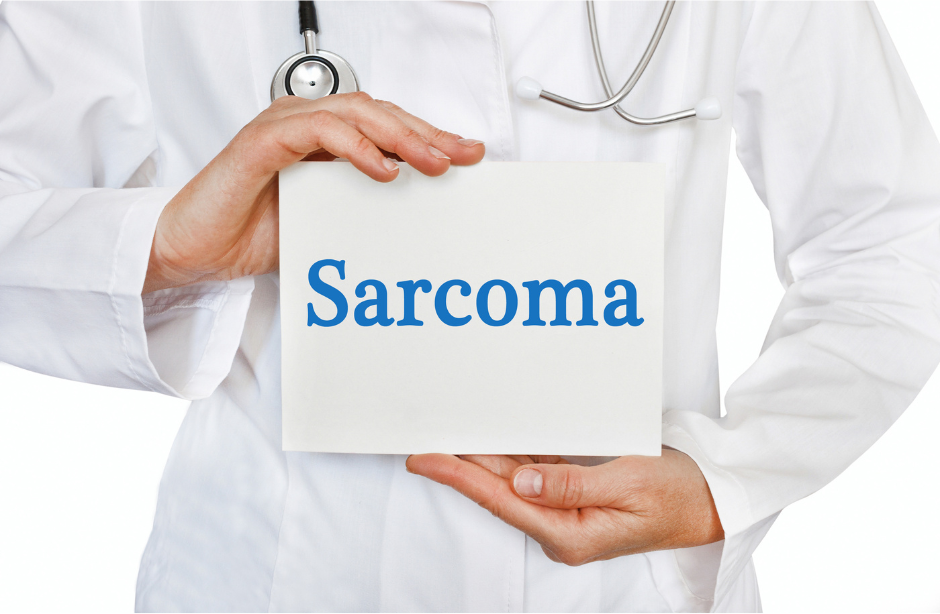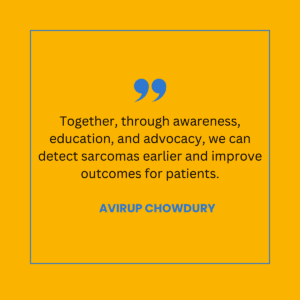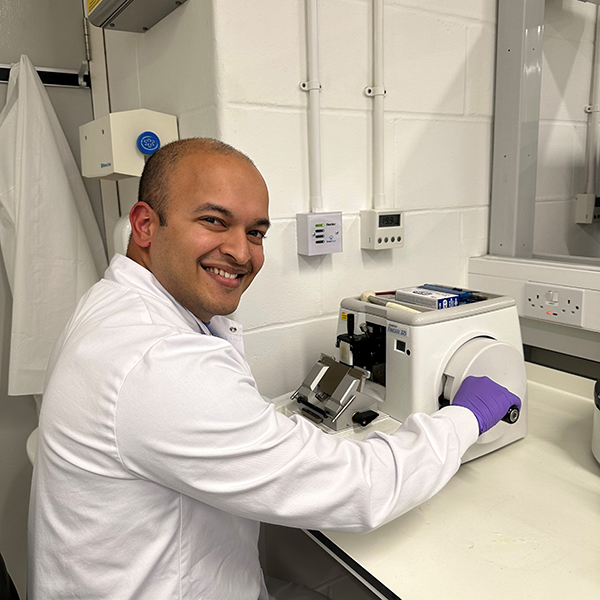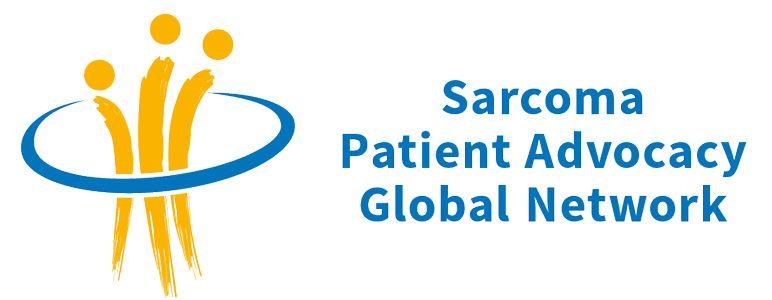Detecting sarcomas early is crucial

Key factors to improve the diagnostic pathway
By Dr. Avirup Chowdhury
Early diagnosis of sarcomas is crucial. Accurately identifying the type of sarcoma allows clinicians to select treatments which are most effective. It comes as no surprise, then, that sarcoma patients who are diagnosed early and accurately tend to have higher chances of cure and live longer on average.
But diagnosing sarcomas can be challenging. They are rare and complex diseases which can arise at any age and at any site in the body. The earliest symptoms tend to be vague: a lump or swelling, or tenderness. It is hardly surprising that these are initially put down to other causes – sports injuries, insect bites and so on. Healthcare professionals, too, face the same challenges: many will come across only a handful of sarcomas in their entire career.
Sarcomas may thus not be at the forefront of their mind. As a result, sarcomas may be initially misdiagnosed or referred to the wrong specialties. In low-resource countries, there may not be any specialist centres available at all to diagnose or treat them.
misdiagnosed or referred to the wrong specialties. In low-resource countries, there may not be any specialist centres available at all to diagnose or treat them.
All of this together means that patients tend to go to their doctors later, and when they do, it takes often longer for them to be diagnosed. But that does not necessarily need to be the case.
The diagnostic pathway
The typical clinical pathway might involve a patient noticing unusual symptoms and presenting to their primary care physician. He or she undertakes a physical examination and orders initial investigations, including imaging (such as ultrasound) and blood tests. Based on these results, an onward referral to a specialist may be made.
Once a referral to an oncologist is made, further imaging (usually via MRI or CT scan) and a biopsy (where a small sample is taken to be examined under a microscope) are used to diagnose the type and stage of sarcoma. These are then used to determine the appropriate treatment and management plan.
The ideal scenario
Several key factors might improve the pathway to diagnosis outlined above. These include factors related to the patient, their doctors and the healthcare system more broadly:
- Early recognition of symptoms: the patient and their primary care physician recognise their symptoms as potentially serious early on.
- Appropriate testing: Investigations are undertaken quickly to establish the type and extent of disease, including imaging and biopsy.
- Rapid referral: A prompt referral is made to a specialist oncology service.
- Specialist centres: An oncology specialist centre with expertise in sarcoma management is available within a short period of referral.
- Multidisciplinary team involvement: A multidisciplinary team (including surgeons, oncologists, radiologists and pathologists) reviews results and forms a management plan tailored to the individual and their disease.
A concerted effort is required to achieve early and accurate sarcoma diagnosis. Reassuringly, many healthcare systems are working towards improving cancer diagnostic pathways. For example, in the United Kingdom, a Faster Diagnosis Framework has been developed to support more efficient diagnostic pathways for suspected cancer. This includes pathways specifically designed for patients with non-specific symptoms, which is especially important in the diagnosis of sarcomas.
However, such frameworks may not be immediately applicable to low- and middle-income countries. More work is required to develop and implement similar approaches across low-resource settings to ensure that all sarcoma patients are offered the best chance at a good outcome, no matter where in the world they may be.
Related: What Is a Sarcoma ‘Specialist Center’? Multidisciplinary Research Finds an Answer
Looking to the future – what can be done?
 Much progress is being made in sarcoma early diagnosis, and there are many exciting developments on the horizon (such as AI-assisted diagnosis) which may further build on these successes. But there is plenty that can be done now.
Much progress is being made in sarcoma early diagnosis, and there are many exciting developments on the horizon (such as AI-assisted diagnosis) which may further build on these successes. But there is plenty that can be done now.
As a global community, we need to educate and empower the public to take charge of their own health. It is important to be on the lookout for suspicious symptoms and present early to your physician. Suspicious symptoms include:
- Unexplained lumps over 5 centimetres in size, increasing in size, deep under the skin, or painful
- Unexplained or persistent bone pain or tenderness which increases in intensity
It is also important that physicians are offered appropriate education and training to manage sarcomas; in recent years, many clinical resources have been developed using expert consensus to support such work. Additional work may be required in countries where there may not be any sarcoma specialists.
Finally, at a healthcare system level, we need to advocate as a global community for improved diagnostic facilities and urgent care pathways across healthcare systems. Advocacy organisations such as SPAGN are invaluable in this regard, and they continue to lead the charge in making early diagnosis a priority.
Together, through awareness, education, and advocacy, we can detect sarcomas earlier and improve outcomes for patients.

Bio: Dr. Avirup Chowdhury is a public health doctor based in the United Kingdom. He is currently pursuing a PhD at the Institute of Cancer Research in London, where he works on soft tissue sarcomas.
Photo: provided by Avirup Chowdury
